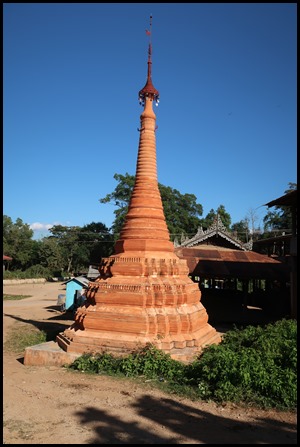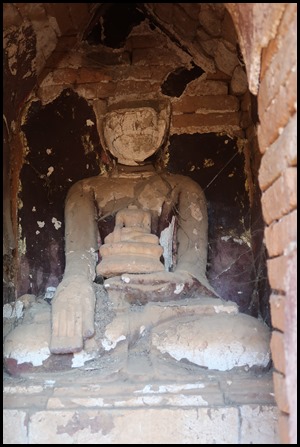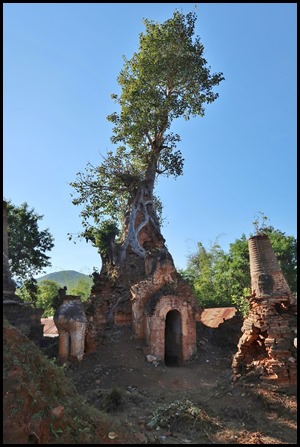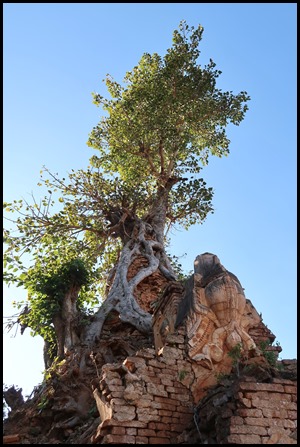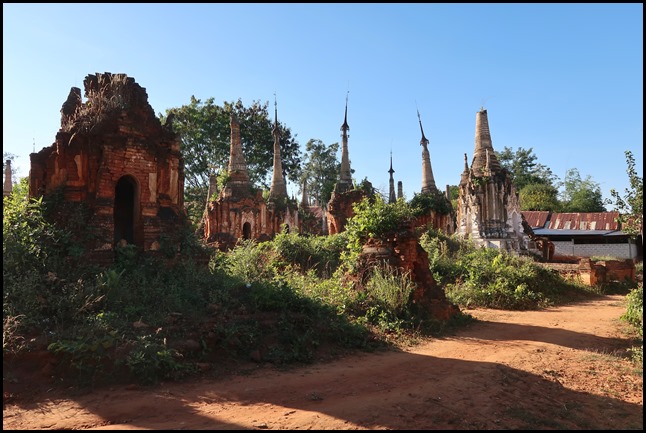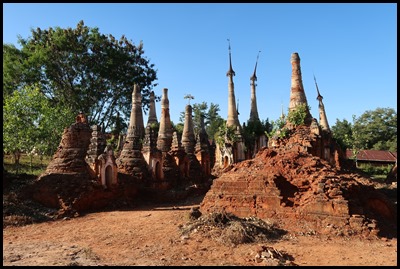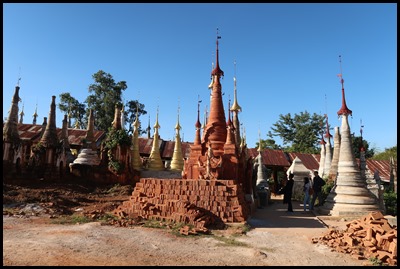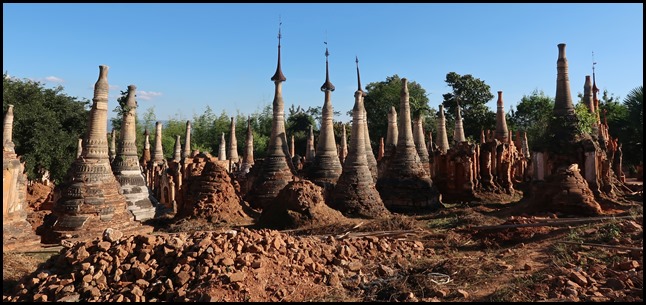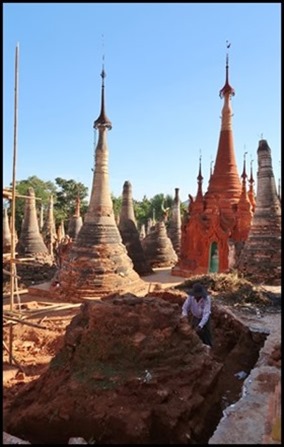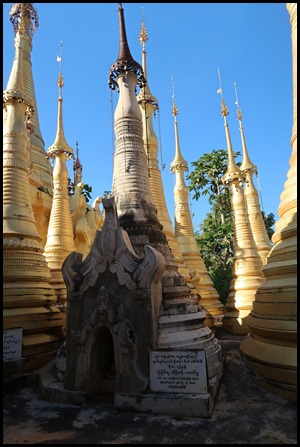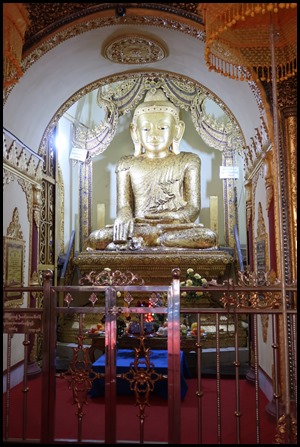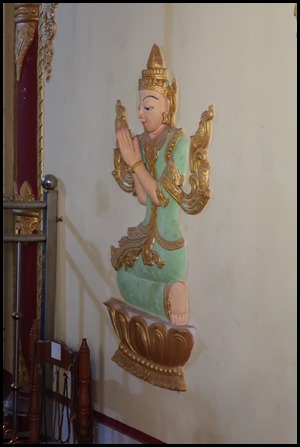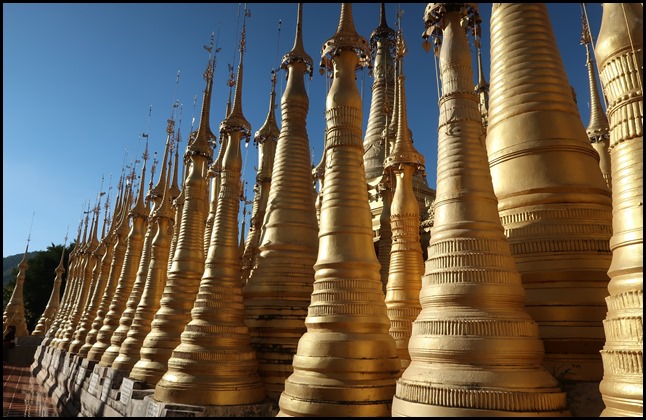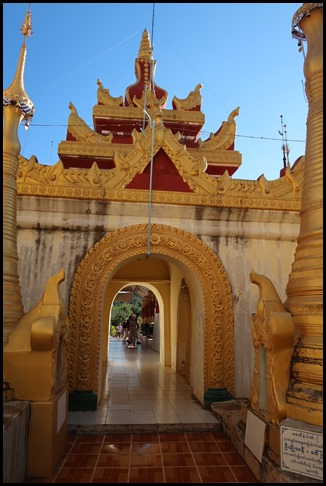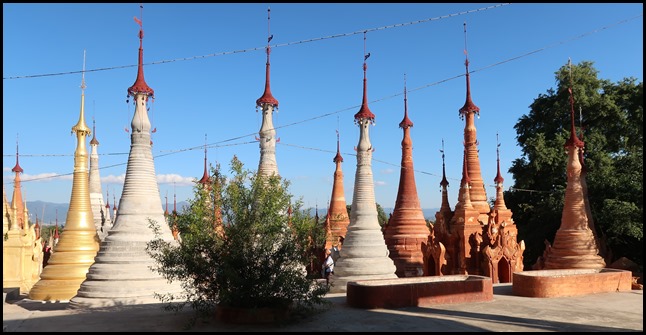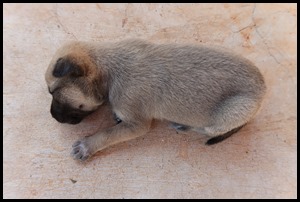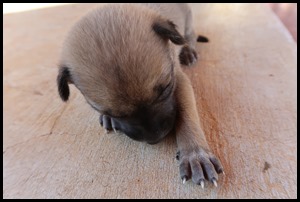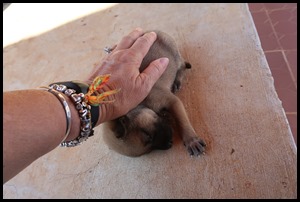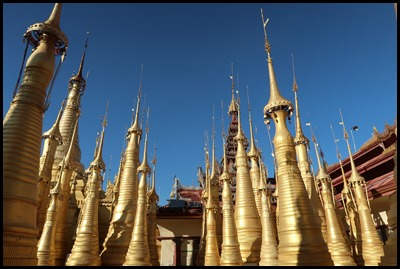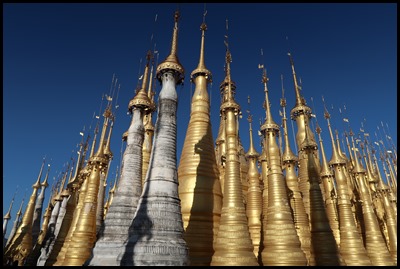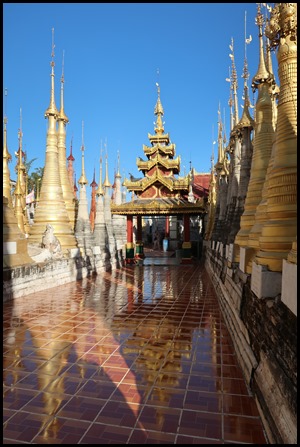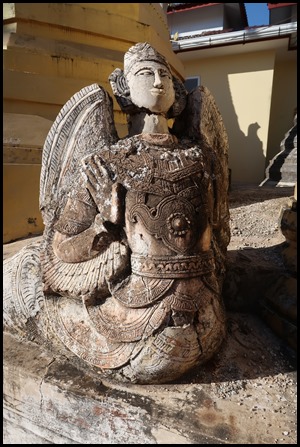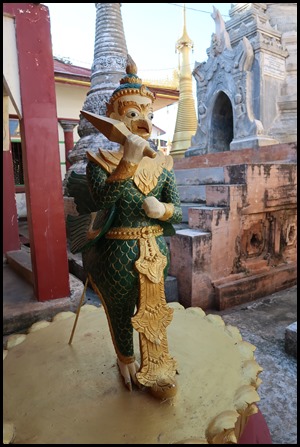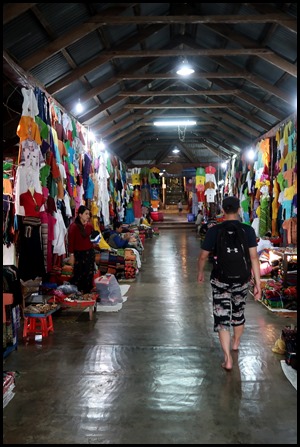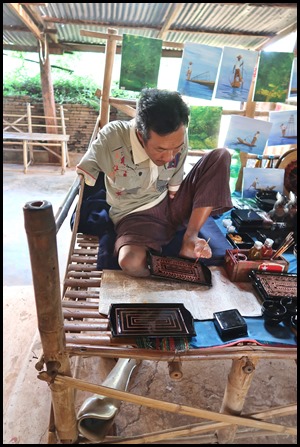Shwe Indain Pagoda

|
Shwe Inn Dain
Pagoda
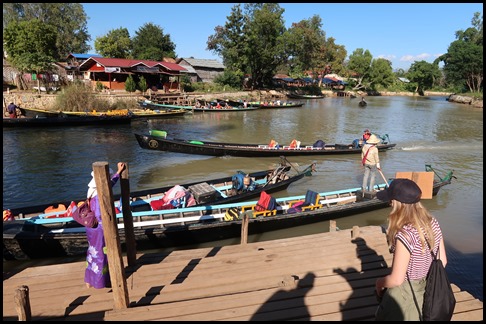 After lunch we took a forty
minute, eight kilometre ride to Indein (Inn Dain, Inn
Tain and other spellings). We rode up fish traps, weirs and wiggly bits. This
journey can only be taken in the rainy season and winter as in summer the water
level is too low. Indein is one of the villages that host the Inle “5-day
market”, a market that is held in a five-day rotating cycle in five villages
around the lake. The Pa-Oh people who live in the surrounding hills sell their
crops here. We left Udin to park our boat (well it actually
belongs to Udin’s brother). Ahead, on the track we could see loads of stupas in
poorly condition and thought this was what we had come to
see.
 Colour us really
surprised. We paid our entry fee and looked up at this picture above the
information board which read: A Brief
History of Shwe Inn Dain (Indein) Pagoda: This pagoda
lies near the Inn Dain Khone Village which is on the western bank of Inle
(Inlay) Lake, Nyaung Shwe Township in the Shan State. According to the stone
inscription, it is known that a small original stupa donated by King Siri Dhamma
Sawka (273 – 232 BC) was encased in the present pagoda.
There is one brick stairway on
each side except on the western part. The eastern stairway is the longest one (
2000’ x 12.5’ ) owing to the successive renovation. The groups of stupas exist
in the entrance of eastern stairway. According to the inventory of monuments in
1999, it is listed altogether (1054) pagodas. The different types of traditional
architectural designs, art and craft work created between 14th century AD and
18th century AD can be seen in these pagodas. Moreover, the mural paintings can
be studied in two temples.
The Department of Archaeology,
National Museum and Library, the local authorities and Shwe Inn Dain pagoda
trustee have been preserving, conserving and renovating these cultural heritage
pagodas of Shwe Inn Dain.

We walked between two rows of empty market stalls (that was a first) and popped out in the sunshine to see a sign that read Nyaung Oak Monastery.
All around us were stupas in varying condition but we contented ourselves at looking in, one very poorly-looking, faceless Buddha, held a smaller headless one.
Some were held together by the very tree roots that had grown through them.
On the opposite side of the track another group of stupas, one under repair. At this point we thought the aerial picture of the site we had seen at the entrance was this area that went a long way back..........Then we saw a load of tourists head up the track, we followed......
We bimbled for about ten minutes and watched as the folk ahead disappeared off the track. We followed and at first thought more of the same, as there was yet another group of stupas.
.........and another and more with piles of bricks.
The groups got bigger in number.
One under repair, one being dug out of the dirt and then a change of colour.
A track led to a covered walkway and into a temple where we found a monk watching TV.....
Buddha and wall decoration. We went to explore through the back door and.........
...........both our jaws dropped as we were looking at hundreds of stupas in perfect condition.
We bobbed through an archway and found ourselves higher than the last area.
Suddenly we knew how Alice in Wonderland felt. So many perfect stupas.
Later we read: The village is best known for its many ancient pagodas in many shapes and sizes and in various states of preservation. While some have been restored, others are in their original crumbling state. Around Indein village are two groups of ancient pagodas, Nyaung Ohak and Shwe Inn Thein. The first site near the boat landing is Nyaung Ohak, which translates to “group of banyan trees”. Most of the pagodas here have not been restored and are in various states of repair; some are well preserved, while others have plants and trees growing out of them. Many pagodas are decorated with sculptings of celestial beings or mythological animals as Naga serpents and Chinthes. Some enshrine images of the Buddha. From Nyaung Ohak a climb leads to the second group of pagodas named Shwe Inn Thein located on top of a hill. A 700-metre covered walkway leads up to the pagodas. The walkway is lined with stalls where vendors sell Shan shoulder bags, longyis, shirts and other items. The site is believed to date back to the days of the Indian Emperor Ashoka, who sent out monks in the 3rd century BC across Asia to spread Buddhism. Centuries later two Kings of the Bagan empire, Narapatisithu and Anawrahta built pagodas at the site. The site contains hundreds of pagodas, collectively known as the Shwe Inn Thein pagodas. Most are from the 17th and 18th century; the earliest one with an inscription dates to the 14th century. The hti, a top element shaped like an ornamental umbrella is missing at many of the unrestored stupas. A number of stupas have been restored by donors, both Burmese and foreign. At the centre of the Shwe Inn Thein group is the shrine of the Inn Thein Buddha image. The shrine that is believed to have been built by King Ashoka houses a golden Buddha image in the meditation mudra. From the top of the hill visitors have great views of Indein village and the surrounding area.
A scrap of a new friend.
Back through the archway and beyond the pagoda, more.
From the tiled floor we joined the covered walkway heading downhill. We passed a couple of guardians.
We passed through hundreds of stalls including a man painting so delicately with his foot.
ALL IN ALL STILL SURPRISED VERY IMPRESSIVE
|
